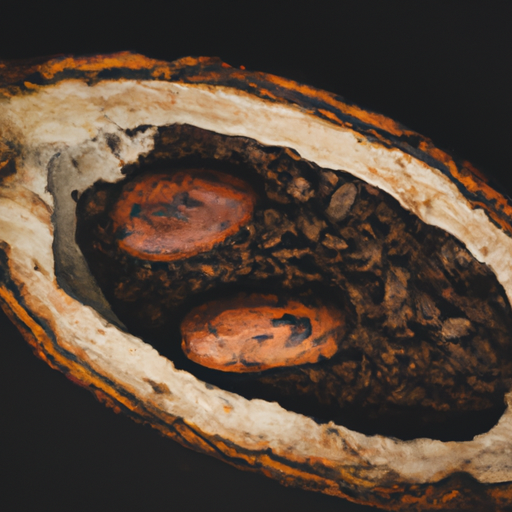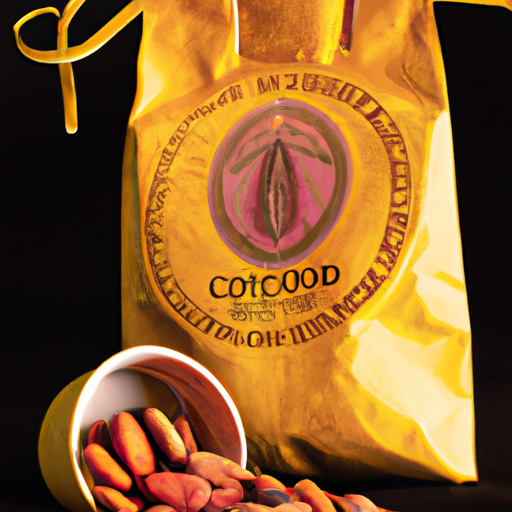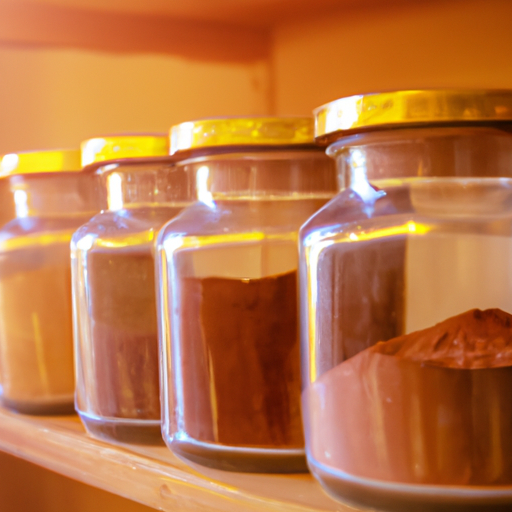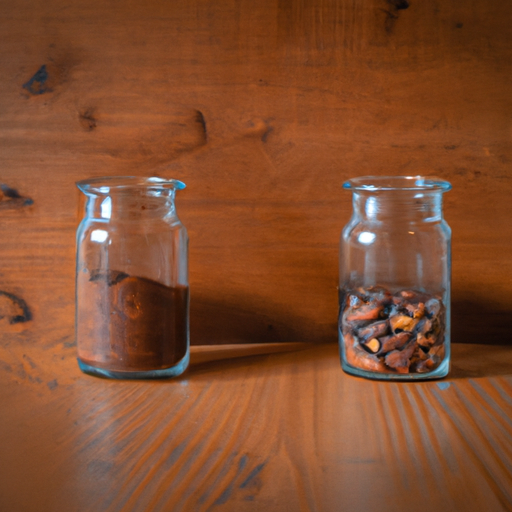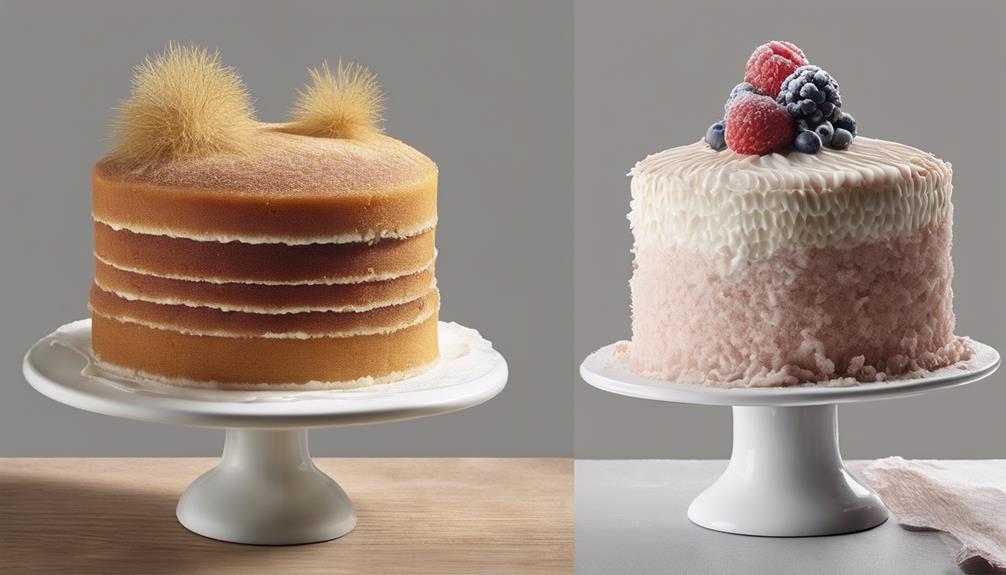As I explore the realm of raw cacao, I am mesmerized by its luxurious aroma, smooth texture, and decadent flavor. However, beyond its sensory pleasures, raw cacao contains a valuable mineral called magnesium.
Magnesium, often overlooked but essential for our overall well-being, plays a crucial role in countless bodily functions. From supporting a healthy heart to promoting strong bones and muscles, this mighty mineral is a true powerhouse.
In this article, we will explore the nutritional value of raw cacao, uncover the health benefits of magnesium, and delve into the recommended daily intake. We will also compare the levels of magnesium in different food sources and discuss how to incorporate raw cacao into our diets.
So, join me on this journey of discovery as we unlock the secrets of raw cacao and the power it holds within.
Key Takeaways
- Raw cacao is a good source of magnesium, providing around 64 milligrams per ounce.
- Magnesium in raw cacao is crucial for bodily functions, including muscle and nerve function, energy production, and bone health.
- Incorporating raw cacao into the diet can help regulate blood pressure and support a healthy immune system.
- Enjoying raw cacao as a delicious treat is a fantastic way to boost magnesium intake and reap the overall health and wellness benefits.
The Nutritional Value of Raw Cacao
Did you know that raw cacao is not only delicious, but it also packs a punch in terms of its nutritional value?
Raw cacao comes from the Theobroma cacao tree, which is native to the tropical regions of Central and South America. It has been cultivated for thousands of years by various indigenous cultures.
The processing methods of raw cacao involve fermenting and sun-drying the cacao beans, which helps to preserve its natural properties. This minimal processing allows raw cacao to retain a higher amount of nutrients compared to processed chocolate products.
Now, let’s talk about the health benefits of magnesium found in raw cacao.
Health Benefits of Magnesium
Imagine how amazing you’d feel if you incorporated more of this powerful mineral into your diet! Magnesium, found in raw cacao, offers numerous health benefits.
One of its primary benefits is its role in promoting better sleep. Magnesium plays a crucial role in regulating and promoting healthy sleep patterns. It helps to calm the nervous system, relax muscles, and reduce anxiety, which can all contribute to a more restful sleep.
Additionally, magnesium is essential for proper muscle function. It supports muscle relaxation and contraction, making it vital for athletes and those who engage in physical activity. By ensuring an adequate intake of magnesium, you can promote better sleep and enhance muscle performance.
So, let’s dive into the next section to learn more about the recommended daily intake of magnesium.
Recommended Daily Intake of Magnesium
To truly enhance your well-being and unlock the potential of your body, understanding the recommended daily intake of this powerful mineral is essential. Magnesium is a vital nutrient that plays a crucial role in numerous bodily functions, including energy production, muscle contraction, and nerve function. The recommended daily intake of magnesium varies depending on age and gender. For adult men, the recommended intake is around 400-420 milligrams per day, while adult women should aim for 310-320 milligrams per day.
To put these numbers into perspective, here’s a comparison of the recommended daily intake of magnesium and some common food sources:
| Food Source | Magnesium Content (per 100g) |
|---|---|
| Raw Cacao | 500 milligrams |
| Spinach | 79 milligrams |
| Almonds | 270 milligrams |
| Avocado | 29 milligrams |
| Black Beans | 60 milligrams |
As you can see, raw cacao is an excellent source of magnesium, providing more than the recommended daily intake in just 100 grams. In the next section, we will delve deeper into the comparison of magnesium levels in different food sources.
Comparison of Magnesium Levels in Different Food Sources
Boost your magnesium intake by incorporating a variety of nutrient-rich foods like spinach, almonds, avocado, and black beans into your daily diet. These foods not only provide essential nutrients but also contain high levels of magnesium.
When comparing magnesium levels in different food sources, it is evident that these four options stand out. Spinach, for example, is a powerhouse of magnesium, offering approximately 157 milligrams per serving.
Almonds, on the other hand, are a convenient snack that contains about 76 milligrams of magnesium per ounce.
Avocado is not only delicious but also a great source of magnesium, with approximately 58 milligrams per fruit.
Lastly, black beans are a versatile legume that can be added to various dishes and offer around 60 milligrams of magnesium per cup.
Boosting your magnesium intake through these foods is crucial for maintaining overall health.
Now let’s explore how incorporating raw cacao into your diet can further enhance your magnesium intake.
Incorporating Raw Cacao into Your Diet
When it comes to incorporating raw cacao into my diet, I like to explore new recipes and ideas that make use of this nutritious ingredient. From smoothies to energy balls, there are endless possibilities for incorporating raw cacao into my daily meals and snacks.
Additionally, I always make sure to follow tips for buying and storing raw cacao to ensure its freshness and quality.
Raw Cacao Recipes and Ideas
Looking for some creative ways to incorporate raw cacao into your diet? How about trying out these delicious raw cacao recipes and ideas?
Raw cacao desserts are a fantastic way to satisfy your sweet tooth while reaping the benefits of magnesium-rich cacao. From raw cacao brownies to raw chocolate truffles, there are endless possibilities for indulging in guilt-free treats.
For a refreshing twist, why not whip up a raw cacao smoothie? Blend together raw cacao powder, frozen banana, almond milk, and a handful of spinach for a nutritious and energizing beverage.
These recipes not only taste amazing but also provide a good dose of magnesium, which can support healthy muscle function and promote relaxation.
Now, let’s move on to some helpful tips for buying and storing raw cacao.
Tips for Buying and Storing Raw Cacao
If you’re a fan of incorporating this superfood into your diet, here’s a helpful tip for ensuring the freshness of your cacao: store it in an airtight container to keep its rich flavor intact.
Here are some buying tips and storage recommendations to make the most of your raw cacao:
- Look for organic and fair-trade options to support sustainable farming practices.
- Check the label for the percentage of cacao to ensure you’re getting a high-quality product.
- Opt for raw cacao nibs or powder, as they contain more nutrients compared to processed cocoa.
- Keep your raw cacao away from direct sunlight and heat to prevent it from melting or becoming rancid.
- Store it in a cool, dry place, such as a pantry or cupboard, to maintain its optimal freshness.
By following these tips, you can enjoy the full benefits of raw cacao in your recipes and beverages.
Moving on to the potential side effects and precautions of consuming raw cacao…
Potential Side Effects and Precautions of Consuming Raw Cacao
When consuming raw cacao, it is important to be cautious and mindful of potential side effects and precautions. Raw cacao contains caffeine and theobromine, which can stimulate the nervous system and may cause jitteriness or sleep disturbances in sensitive individuals. In some cases, digestive issues such as bloating or diarrhea may occur due to the high fiber content in raw cacao. It is worth noting that raw cacao contains tyramine, which can trigger migraines in certain individuals. If you have any existing health conditions or are taking medications, it is advisable to consult with a healthcare professional before incorporating raw cacao into your diet.
Research and Studies on the Benefits of Raw Cacao
Studies have shown that regular consumption of raw cacao can improve cardiovascular health and reduce the risk of heart disease. Raw cacao contains flavonoids, which are antioxidants that have been found to have a positive impact on cardiovascular health. These antioxidants help to reduce inflammation and improve blood flow, leading to better heart health.
Additionally, raw cacao has been found to have cognitive benefits. The flavonoids in raw cacao can improve brain function and enhance cognitive performance. They have been shown to increase blood flow to the brain, which can improve memory, focus, and overall cognitive function.
These findings highlight the potential benefits of incorporating raw cacao into your diet.
Moving on to FAQs about raw cacao and magnesium…
FAQs about Raw Cacao and Magnesium
Get ready to discover the mind-blowing effects of incorporating raw cacao into your diet, including the surprising role of magnesium!
Many people have questions about raw cacao and its origins. It comes from the cacao bean, which is native to South America and was revered by ancient civilizations for its health benefits. One common misconception is that raw cacao is the same as processed chocolate, but they are quite different. Raw cacao is minimally processed, retaining more of its natural nutrients and antioxidants.
Another frequently asked question is about the magnesium content in raw cacao. Magnesium is an essential mineral that plays a crucial role in various bodily functions, including muscle and nerve function, energy production, and bone health. Raw cacao is an excellent source of magnesium, with just one ounce providing around 64 milligrams. This makes it a fantastic choice for those looking to boost their magnesium intake.
Transitioning into the next section, let’s delve into the conclusion: the power of magnesium in raw cacao.
Conclusion: The Power of Magnesium in Raw Cacao
Indulge in the tantalizing allure of raw cacao and unlock the hidden treasure trove of magnesium’s mighty power. Raw cacao is not only a delectable treat but also a rich source of magnesium, an essential mineral for our overall health and wellness. Incorporating raw cacao into our daily diet can provide us with the much-needed dose of magnesium.
Magnesium plays a crucial role in various bodily functions, including energy production, nerve function, and muscle health. It also helps regulate blood pressure and supports a healthy immune system.
Imagine savoring a piece of raw cacao, feeling its velvety texture melt in your mouth, and knowing that it is nourishing your body with this vital mineral. Picture yourself feeling energized, calm, and vibrant, all thanks to the power of magnesium.
So, don’t just indulge in the deliciousness of raw cacao; embrace the importance of magnesium in your daily diet and experience the amazing benefits it brings to your overall health and wellness.
Frequently Asked Questions
Can consuming raw cacao provide all the magnesium needed for our daily intake?
Raw cacao can contribute to our daily magnesium intake, but it may not provide all the magnesium needed. It’s essential to have a balanced diet and consider other sources. Determining magnesium deficiency involves medical tests and symptoms like muscle cramps and fatigue.
How does the magnesium content in raw cacao compare to other sources of magnesium-rich foods?
When it comes to magnesium-rich foods, raw cacao stands tall among its peers. Comparing its magnesium content to other sources, raw cacao reigns supreme, making it a wonderful choice for magnesium supplementation.
Are there any potential side effects of consuming excessive amounts of raw cacao for its magnesium content?
Excessive consumption of raw cacao for its magnesium content may lead to potential health risks. It is important to consider the recommended daily intake of magnesium and not solely rely on raw cacao as a source.
Can raw cacao be used as a magnesium supplement for individuals with magnesium deficiencies?
Raw cacao can be a beneficial magnesium supplement for individuals with deficiencies. It offers numerous benefits for magnesium deficiency due to its high magnesium content and can help improve overall magnesium levels in the body.
Are there any specific recipes or ways to incorporate raw cacao into our diet to maximize magnesium intake?
To maximize magnesium intake, I recommend incorporating raw cacao into your diet through recipes like smoothies, energy balls, or homemade chocolate. Raw cacao offers various benefits beyond magnesium, such as antioxidants and mood-enhancing properties.
Does the pH level of raw cacao affect its magnesium content?
Yes, the pH level of cacao does affect its magnesium content. Cacao with a higher pH level has increased magnesium. This is important because magnesium is a crucial mineral for many bodily functions and having a higher pH level can maximize its absorption in the body.
Conclusion
So there you have it, folks. Who would have thought that a delicious treat like raw cacao could pack such a punch when it comes to magnesium?
It’s ironic how something so indulgent can also be so good for you.
With its impressive magnesium content, raw cacao can help support your overall health and well-being.
So go ahead, indulge guilt-free in some raw cacao and let its magnesium power work its magic on you.
Your taste buds and your body will thank you!

